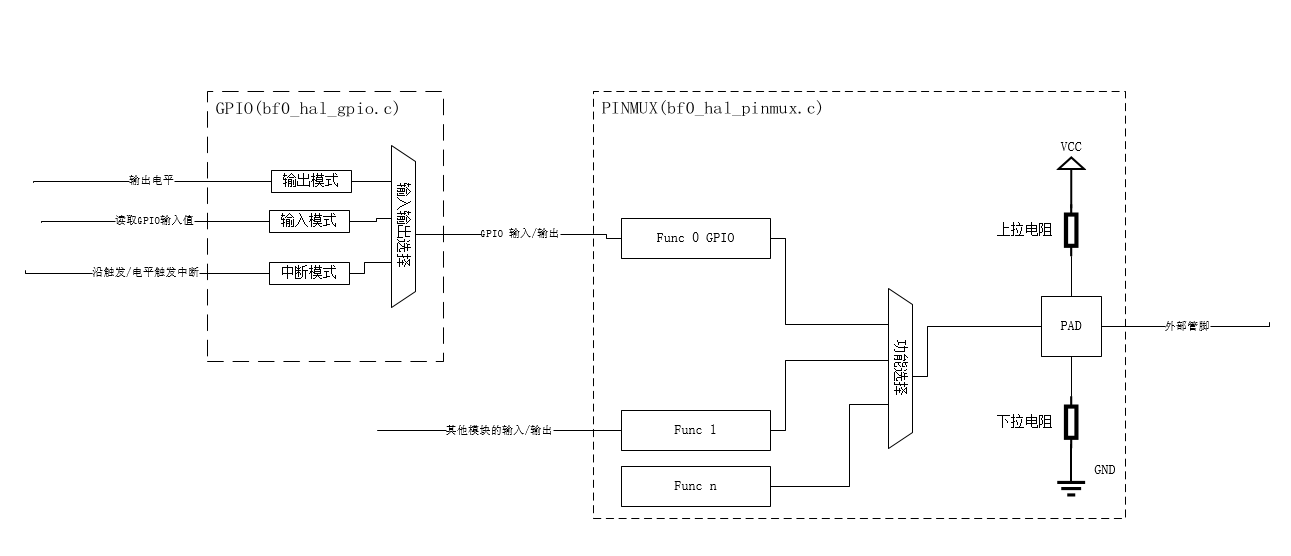PINMUX
HAL PINMUX provides abstract software interfaces to operate the hardware PINMUX module, setting pin functions and pull-up/pull-down attributes.
The chip has two PINMUX instances: PINMUX1 (hwp_pinmux1) in the HPSYS domain and PINMUX2 (hwp_pinmux2) in the LPSYS domain.
PINMUX1’s pin list is found in pin_pad_hcpu, with available pin functions referenced in pin_pad_func_hcpu. Similarly, PINMUX2’s pin list is found in pin_pad_lcpu, with pin function definitions found in pin_pad_func_lcpu.
Starting from 56x series chips (excluding 55x, 58x), any GPIO in the pinmux functionality can serve as an I/O pin for any I2C/UART/PWM in the current system.
For detailed API documentation, refer to bf0_hal_pinmux.h
Difference Between GPIO and PINMUX Modules
Physically, GPIO needs to connect to the external world through the pinmux module, as shown in the figure:

Using HAL PINMUX
void pin_func_set_example(void)
{
/* set HCPU PA10 and PA14 for I2C */
HAL_PIN_Set(PAD_PA10, I2C1_SCL, PIN_PULLUP, 1);
HAL_PIN_Set(PAD_PA14, I2C1_SDA, PIN_PULLUP, 1);
/* set LCPU PB12 and PB14 for UART4 */
HAL_PIN_Set(PAD_PB12, USART4_TXD, PIN_PULLUP, 0);
HAL_PIN_Set(PAD_PB14, USART4_RXD, PIN_PULLUP, 0);
}